Relevant Overviews
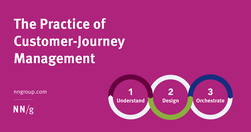
User journeys should be managed like products — by people and teams with specialized, journey-dedicated roles who continually research, measure, optimize, and orchestrate the experience.

Jakob Nielsen’s 10 usability heuristics can improve the user experience of VR applications.
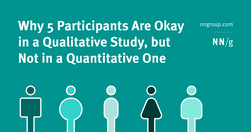
Qualitative usability testing aims to identify issues in an interface, while quantitative usability testing is meant to provide metrics that capture the behavior of your whole user population.

We’re not as rational as we think. The human brain is designed to make quick and effective decisions rather than stick to facts at all times. Instead of acting rationally, we prefer to act fast. This may lead to better outcomes indeed, but it might also lead you astray. Cognitive biases can be both a blessing and a curse.

We can’t “fix” our minds and stop making errors in judgment, but we can become more aware of biases that influence our decision making.
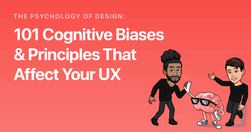
Below is a list of cognitive biases and design principles (with examples and tips) for each category. Let’s dive right in.

A good design relies on a thorough task analysis of the steps required to complete a task, as well as determining what information users need at each step.
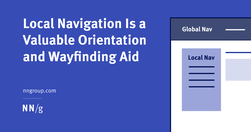
Local navigation indicates to users where they are and what other content is nearby in an information hierarchy.

Study of almost 3 million Facebook and Twitter posts from US media and politicians shows divisive posts dunking on opponents drive engagement on social media.
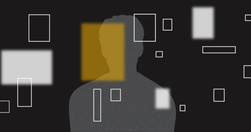
Online disinformation and propaganda have evolved into one of the greatest challenges to the safety of the internet. ... One of the first approaches we investigated was psychological inoculation, also called attitudinal inoculation, a technique to help people resist manipulative messages.
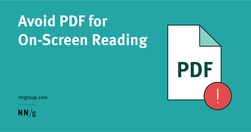
Forcing users to browse PDF files causes frustration and slow task completion, compared to standard webpages. Use PDF only for documents that users will print. In those cases, following 10 basic guidelines will minimize usability problems.
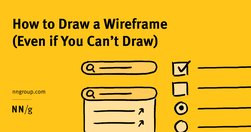
Even people with limited drawing abilities can learn to sketch a wireframe if they learn a few common conventions used to represent various design elements.

Tried and true principles for the past, present, and future of good design

there are many straightforward methods and strategies for measuring design impact. Two areas I recently combined while exploring the design impact at Gem—where we're building the source of truth for top-of-funnel recruiting—are top tasks and PURE (Pragmatic Usability Ratings by Experts). Here's how I did it.
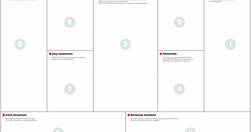
One of these roles is a UX Strategist, which aligns user experience design with the business goals and strategy of the company.

100. When we design products and services, it’s not about what we want them to be — it’s what we want the people using them to be: generous, helpful, thoughtful, useful, beautiful, respectful, kind.
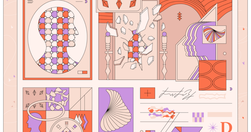
It isn’t a mystery that a large part of delivering a highly successful user experience is understanding what the customer wants/needs along with the cognition that consequently gets customers thinking about what they want/need.

Information architecture is the process of categorizing and organizing information to create structure and meaning. Understanding the bigger picture enables us to get a much clearer perception of the value that good information architecture delivers to help our information-overloaded lives.
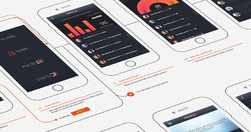
what the differences are between the many different types of visualizations, from “flow-charts” to “User Flows,” and why so many people misunderstand them.
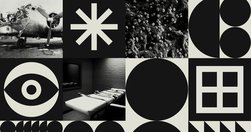
This article explores a few cognitive biases I’ve experienced first-hand as well as strategies for mitigating their influence.
As designers, as creators and managers of websites and apps, we can start by focusing on two principles: Do not track Delete

After getting replies that debunked false political news they’d shared, users were more likely to share low-quality news.
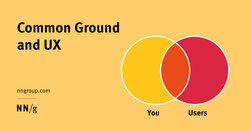
Any efficient communication requires that communication partners establish and rely on common ground so that they can take communication shortcuts.

Succinctly documenting the right details in key places helps Agile teams avoid information overload. When UX documentation is skipped or disorganized, teams waste time trying to find or remember information instead of improving the product.

A survey of people in user experience and product management shows that these professionals disagree on who should be responsible for many key tasks, like doing discoveries and early design.

Persistent headers can be useful to users if they are unobtrusive, high-contrast, minimally animated, and fit user needs.

A survey of 372 UX and PM professionals shows that duplicative work is frequent and generates confusion and inefficiency.
Frequent major redesigns and changes throughout the interface support users’ need to learn and adapt to new situations.
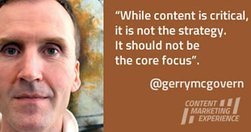
The single most important thing I’ve learned about online marketing is that it is about paying attention. Offline marketing is about getting attention, but once someone is on your website, they know what they want to do, so your first job is to help them do what they came to you website to do as quickly and easily as possible.
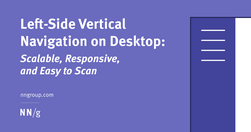
Vertical navigation is a good fit for broad or growing IAs, but takes up more space than horizontal navigation. Ensure that it is left-aligned, keyword front-loaded, and visible.